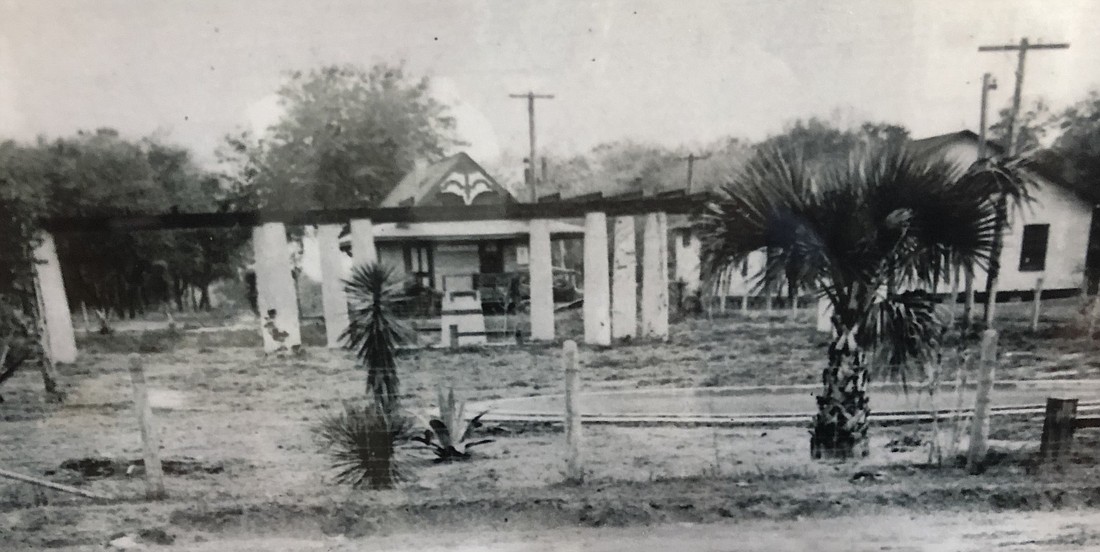- October 23, 2024
-
-
Loading

Loading

When the town of Oakland’s Healthy West Orange Arts & Heritage Center was planned, drawings called for it to wrap around the existing Grace Park, which stands west of Tubb Street near Oakland Town Hall. This appeared to be a natural fit: a history center abutting a historic icon.
But as construction continued on the new building, some town officials decided it was too close to Grace Park. The entire project is ADA compliant; it’s a matter of aesthetics.
Moving an important piece of history puts the town in a predicament, but the Town Commission hopes it has found a compromise everyone can live with.
Just four of the 12 columns remain of Grace Park, and town staff think only one of those is an original from the 1913 project.
The plan is to relocate the two eastside columns to the other side of the westside columns, ensuring that at least part of the park remains in its original location.
All of this is contingent upon price, and if commissioners aren’t happy with the amount, they will continue discussions on what can be done.
Mayor Kathy Stark has objected to moving any part of the historic park.
Town staff believes there are more pillars buried underneath the West Orange Trail and expect several could be unearthed if the town opts to move a portion of the trail further south, away from the park and heritage center.
Grace Park was built in response to the Mather-Smiths’ sponsorship of a town beautification program. The park was laid out and landscaped through fundraising events. It featured two circular reflecting pounds, flowering vines on trellises, benches and a 12-column pergola with a lattice roof and fountain in the center.
Roughly 30 years ago, two columns remained of the 12; two others were later discovered and erected. The town built a new pergola and placed personalized bricks underneath.
Oakland entered a $1 million partnership with the West Orange Healthcare District last year and agreed to add a health and wellness component to the facility programs.
SEWER, WATER AGREEMENTS
The Oakland Town Commission voted in favor of amending its sewer and water agreements at its Jan. 28 meeting.
The first amendment pertains to the sewer improvements project. In 2018, the Florida Legislature appropriated $1 million, which has made it possible to install a gravity sewer system on West Oakland Avenue and a force main that connects the area east of Tubb Street with the Longleaf neighborhood.
The improvements have been bid and currently are under construction; however, the lift station portion of the project has been slow to come together.
The amendment extends the construction time to Dec. 31 to allow for completion of the lift station.
The second amendment is to clarify the town’s position with the town of Montverde for a potable water interconnection for emergency use in 2016. A year later, the agreement was updated to provide bulk water for potable use and fire protection, to the Apopka Sound neighborhood.
Delayed construction created a need to modify the plans to the connection point. The changes to the interlocal agreement, among other things, place a limit on the amount of water the development can use through the connection and states Montverde will pay the full water impact fee instead of a reduced fee for each home.